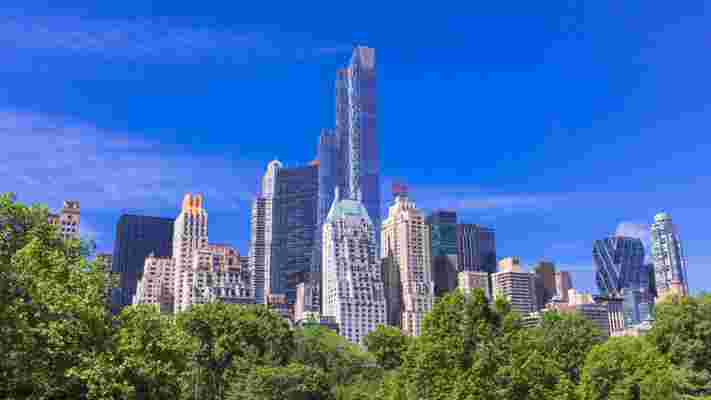Living in the midst of a drastic growth period, the citizens of New York have to wonder—what’s next for our city? Over the weekend, dozens of professionals across the design, architecture, and real-estate industries met to discuss just that at the City of Tomorrow summit, a collaboration of the 92nd Street Y, Hundred Stories, and Chardonnay Pickard. Seminars ranged from informative talks about ongoing NYC projects to lessons from the pros about designing your best home. We dropped in on several sessions, and here’s what we learned about the New York of tomorrow.

Lower Manhattan is adopting a new identity.
In the years that have passed since 9/11, Manhattan’s southernmost region has undergone a massive transformation, not just architecturally with the rebirth of the World Trade Center, but also in its core identity. It has transitioned from a nine-to-five neighborhood for bankers to a major residential hub. “If you said we would have three times the number of people living downtown [today] than we did on 9/11, no one would have believed you,” said Jessica Lappin, president of the Alliance of Downtown New York. With plenty of new developments, like the 157 luxury condos at the Four Seasons Downtown , residential options are growing. Plus, companies in creative industries are snatching up new office space ( AD and its parent company, Condé Nast, moved to One World Trade Center two years ago), bringing a young vibrancy into the neighborhood. With the influx of new residents and a new workforce, there has also been growth in commercial offerings, from the luxe shopping centers Brookfield and Westfield to a redeveloped entertainment complex at the South Street Seaport.
Brooklyn will continue to be a development hotbed.
“A lot of people ask me what innings different Brooklyn neighborhoods are in,” said developer David Kramer of the Hudson Companies. “Williamsburg is in extra innings, Park Slope is in the eighth, and Bushwick is in the third.” Developers moved into the borough for one main reason—it was cheap. Now that the western reaches of Brooklyn are already booming, Kramer is looking for “the next subway station past where everybody is,” which for him is Prospect–Lefferts Gardens on the east side of Prospect Park. New projects often concern locals, but developers insist they are bringing great opportunities to longtime residents. “We focus on jobs and job training for locals,” said Charlie Bendit of Taconic Investment Properties.
But—the rapid real-estate growth of the last decade will likely slow within the next two years.
“We’re finishing up the postrecession burst in the next 18 to 24 months,” said Kramer. Many of the projects that were started when the economy rebounded will finally come to fruition, and then the pace of development will slow. “There’s already a completely quiet market in Manhattan,” noted Michael Stern of JDS Development. Landowners are demanding extremely high prices, and developers know they won’t be able to make a return on their investment. Plus, community boards and city officials are pressing for 100 percent affordable housing, but that, too, is not economically feasible.
It’s all about adaptive reuse—and honoring architectural legacy.
An architect’s greatest challenge today might not be designing new structures, but reimagining and enhancing old ones while maintaining their legacy. “If a building is good, it tells us a story about its past,” said Eran Chen, founder and executive director of architecture firm ODA. He is currently reworking a former sugar factory in Brooklyn’s Dumbo neighborhood as an office building. “You get to take an old story and write a continuation of it,” he said. But, he added, there needs to be the right balance of old and new, innovation and preservation. Similar projects can be found across the city: Studio Gang is designing a new wing at the American Museum of Natural History (which is an architectural time capsule with more than 20 buildings added over its nearly 150-year history), and Gerner Kronick + Valcarcel just converted the neglected office building at 5 Beekman Street into one of downtown’s newest luxury hotels .